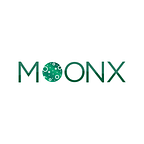Will gaming accelerate the mainstream adoption of blockchain technology?
The transformative capability of blockchain is one of the widely discussed subjects today and as we know, its applications in crypto have gained significant momentum over the past few years. By and large, cryptocurrency is the most common usecase of blockchain, but its potential exceeds much beyond the transfer of ownership in trading scenarios. The versatility, coupled with the evolutionary nature of blockchain makes it prominent in sectors such as agriculture, telecommunications and manufacturing. Let’s look at the billion-dollar gaming industry that’s coming to the fore by changing the prime facets of computer games enjoyed by millions across the world. Most importantly, introducing blockchain would bring better incentives and greater security features to the current state of the gaming.
During the initial stages of blockchain development, the gaming sector remained underutilized mainly due to architectural limitations. The progress in the gaming sector has been outstanding so far as both big and small companies have started pouring in investments in blockchain to up its capabilities. One such example is of XAYA, a platform that allows you to play serverless and uninterrupted games by utilizing the blockchain technology. Such gaming platforms solve scalability issues pertaining to gaming by introducing features which ensure decentralization of every aspect in a gaming project.
What’s to be noted is that not all blockchain-based gaming projects are fully decentralized. A classical game project which runs on a server but has some assets on a blockchain network doesn’t qualify as a fully decentralized gaming platform. Here lies the challenge with such gaming projects. Since the algorithms and gaming protocols run on a server, any alteration to the server-based functions would render the digital assets hosted on the blockchain ineffective. A truly decentralized gaming platform will not just have the digital assets integrated into blockchain but also the functions required for validation of the gaming protocols. This helps prove the asset ownership of gamers in an authentic manner at any given point in time.
Challenges in mainstream adoption of gaming
Gaming industry faces the following challenges in the adoption of blockchain:
· Lack of fool-proof applications which could incentivize millions of gamers
· Expense of setting up gaming systems
· Scalability
Lack of fool-proof applications which could incentivize millions of gamers
The Fogg Model of Behaviour is a set of rules that can be used to demonstrate the relationship between incentivization and game mechanics. It uses three factors to determine the incentivizing of players namely, Motivation, Ability and Trigger. For a game to drive a specific response, the motivation, ability and trigger must be in sync with each other. So, to onboard millions of users on any gaming platform it must meet the following criteria:
· The gaming interface should offer friction-less navigation through the platform.
· The dAPP should be appealing enough to capture the interest of blockchain enthusiasts
Expenses of setting up gaming systems
At present, the gaming systems are demanding in terms of time and cost to set up. Games built on blockchain platforms such as Ethereum attract a certain fee per transaction. Even for games with lower levels of blockchain dependency, the charges compound rapidly. For example, if every move made by the player attracts a charge, then the cost of playing the entire game would be exponentially high.
Scalability
Scalability is the biggest obstacle in implementing gaming on blockchain technology. Depending on the intricacy of the game, players would be required to perform hundreds of transactions to reach more complex levels. While existing blockchains lack the capability to support such transactions, emerging blockchain development platforms such as EOS show positive results in the amalgamation of gaming and blockchain.
Can gaming be a catalyst in the blockchain revolution
With blockchain making significant advancements in a multitude of domains, it’s potential to transform the gaming industry is never a question of doubt. Although, it has a long way to go in making a paradigm shift. It’s an undeniable fact that the potential of gaming to bring masses to the blockchain realm is what most of the crypto-backed gaming projects rely on. From a MoonX point-of-view, the market for gaming is set to boom in the next few years, however, this needs to be approached carefully from a user experience perspective because of the difficulties at an implementation level. Blockchain can improve the gaming standards by introducing fraud-proof payment systems, lower commission fees and true ownership over various aspects of the game which ultimately empowers the players to trade at their will. As per a survey conducted by Worldwide Asset eXchange (WAX), 62% of the respondents were of the view that the ability to transfer virtual items on gaming platforms would make spending money on them worth it.
About MoonX
MoonX, the world’s fastest and safest exchange with decentralized ownership, campaigns for one of the 21 SuperNodes of EOS. While existing solutions offer to solve just one problem at a time, MoonX offers a highly secure, useful and easy-to-use product based on the private blockchain. MoonX has raised 29 million dollars in funding within a short period of time and is supported by BCH, DHVC, Fission Capital, PreAngel, NGC, Ledger Capital, Node Capital, DU Capital, NEO, Badwater Capital, and other investment institutions.
